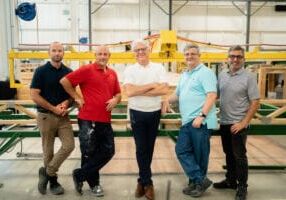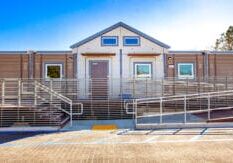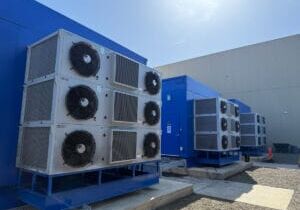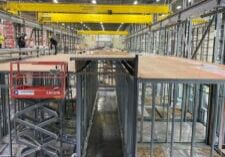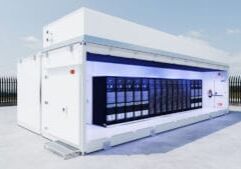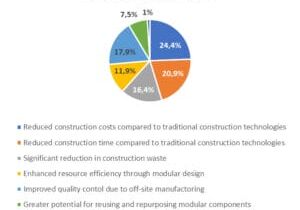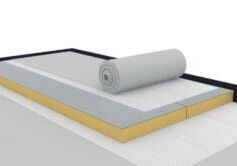Turkish Manufacturer Has Long History of Responding to Disasters
On February 6, 2023, a 7.8 magnitude earthquake rocked southern and central Turkey, killing over 2,300 people and injuring 10,000 more. In the immediate aftermath, one company stepped up to provide temporary housing for those affected by the damage - DORCE Prefabricated Building and Construction. The company is currently producing 320 modular units a day for the continuing relief effort, and, even six months later, those units are going to the victims in the form of permanent housing.
DORCE responded with the force of its huge production capacity, dedicating all their abilities to producing emergency houses for those displaced by the disaster with help from AFAD (Disaster and Emergency Management Presidency of Turkish Republic). They also sent equipment such as excavators and cranes to help with search and rescue efforts, redirected their construction teams to the area, and provided winter clothing such as coats, boots, and sweaters. Thanks to the company’s administrative staff, workers, subcontractors, subcontractor workers, and material suppliers they were able to respond at this critical time.
Their current modular unit is 21 square meters and includes a living room, bedroom, kitchen, and toilet/shower area. The specialized construction of the base and roof contributes to the strength of the unit. Trapezoidal sheet metal protects the inside from outdoor conditions, while the base keeps the unit stable on the ground. Units used for temporary housing can be dismantled and shipped to other locations to provide housing for other projects.
Not only are the modular units strong, but they’re green as well. They are designed to be energy efficient, and since they are made of non-combustible materials, they’re fire resistant too. Units are transported by land, rail, or by air, and are designed to be “plug and play” with the site utilities (currently supplied by AFAD). Unit construction includes the electrical, telecommunications, plumbing, and heating/cooling systems. They can be assembled in 24 hours after arrival at the assembly yard.

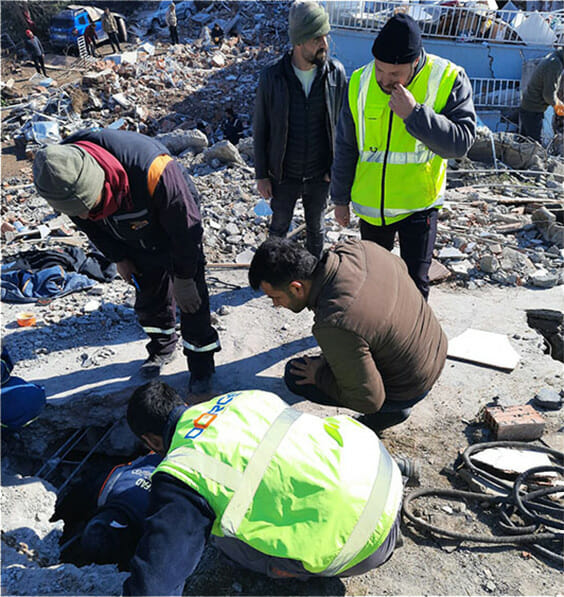
A History of Responding to Emergencies
Looking over the company’s history, this kind of response is the norm, rather than the exception. DORCE has a rich history of responding to disasters in the area, almost from its inception in the early 1980s. Due to its proximity to one of the most active earthquake zones in the world, they have invested a lot of time into the design and production of earthquake- resistant modular structures.
Geldimurat Annageldiyev, who has worked for DORCE since 2003 and is their current Deputy General Manager responsible for Global Business Development, says the company’s first involvement in earthquake relief missions came in 1999 when a 7.6 magnitude quake hit the city of İzmit, Kocaeli Province of Turkey. In three months, the company manufactured modular housing for 20,000 people.
Then in 2003, they responded to a quake in the city of Bam, Iran, providing temporary emergency accommodation units that were later transferred to different regions of the country to be used as dormitory housing for students.

In 2011, 3,000 modules were provided over a 45-day period to house more victims in Ercis and Van, Turkey.
The 2023 earthquake affected some of the most densely populated cities in the country: Hatay, Adıyaman, Kahramanmaraş and Malatya. The most affected people were those living in substandard housing in informal settlements. It also greatly affected several industries in the country, including textiles, automotive, technology, manufacturing, and construction.
The Turkish government recently announced a new housing development program to help those affected by this year’s event. It involves the construction of 650,000 new homes in the next five years in the affected areas. All homes will be built to the highest earthquake safety standards and will be located in safer areas of each city.
The company has gained a reputation for providing a quick response with a large volume of modular structures to accommodate and house people,
either temporarily or permanently. With units specially designed for easy transportation and assembly, they are being looked to as a resource for emergency responses around the world.
International From the Start
DORCE started out as a manufacturer of minor steel construction materials like chairs, doors, windows, and furniture. Within about two years they had expanded to light gauge steel and container buildings, modular units, and pre-engineered heavy steel structures. Throughout its history, its performed projects in over 60 countries, all from its 100,000 square meter manufacturing hub in Ankara, Turkey. The facility is one of the largest active manufacturing plants in the world and has been pumping out 180,000 square meters of prefabricated buildings or 5,000 modular units per month for decades without a slowdown.
The speed with which they are able to produce these units is thanks to the use of modern construction technology, including building information modeling (BIM), Modern Methods of Construction (MMC), Design for Manufacturing and Assembly (DFMA), and Designing for Industrialized Methods of Construction (DIMC). In particular, they rely on BIM to increase the efficiency of the construction process, reduce waste, and to improve the quality and lifespan of the structures.
Their goal has always been to expand internationally, and they’ve done that in a unique way. “As the first step to being successful in international markets, we learned to appreciate and respect the culture and attitude of the countries where we work. Through time, we truly understood the nuances of different cultures, hiring people from around the globe. Today we proudly say that more than 20 nationalities are working in DORCE globally,” says Annageldiyev.
With the growing popularity of modular construction, both in Turkey and other countries, DORCE’s services are in demand, and they are looking to expand their operations accordingly. They already have a history of working with many US and Canadian companies and the military, including the US Army, and NATO in Iraq, Afghanistan, Qatar, and Somalia. They’ve also provided housing for mining companies, modular embassy structures for the US government, and a mass housing project for different US-based companies.


Emergency housing communities manufactured by DORCE
To cement their place in the American market, they’re looking to produce a high-rise volumetric project in the next 5-10 years.
Annageldiyev believes the timing is right, citing increased housing demand in urban areas, the rising cost of traditional construction methods, favorable government policies, a focus on safety and quality, and the rising demand for sustainable volumetric modular buildings. He also sees a great opportunity providing both temporary and permanent housing for the homeless.
Their focus, understandably, is on providing modular production for earthquake prone areas, like California. Their experiences working with these disasters in their own country have them poised to provide a great deal of insight to the US market. They’ve already invested heavily, with plans to open manufacturing facilities in the US and Canada and create partnerships with companies there.
About the Author: Dawn Killough is a freelance construction writer with over 25 years of experience working with construction companies, subcontractors and general contractors. Her published work can be found at dkilloughwriter.com.
More from Modular Advantage
Resia: Breaking All the Rules
Resia Manufacturing, a division of U.S.-based Resia, is now offering prefabricated bathroom and kitchen components to industry partners. Its hybrid fabrication facility produces more precise bathroom and kitchen components (modules) faster and at lower cost than traditional construction. Here’s how Resia Manufacturing does it.
How LINQ Modular Innovates to Bring Modular To The Market in the UAE and Beyond
LINQ Modular, with an office and three manufacturing facilities in Dubai, is a modular firm based in United Arab Emirates. The company is on a mission: to break open the housing and construction markets in the Gulf Cooperation Council (GCC) area with modular.
ModMax: Redefining Modular Construction with Confidence and Precision
ModMax was born out of frustration—frustration with five persistent pain points in modular construction: Permitting bottlenecks. Production delays. Rigid designs. Disconnect between “the office” and the field. Lack of transparency and communication.
LifeArk: Disaster-Resilient Housing from Recycled Plastic and 100-year-old Technology
Wee compares LifeArk’s housing units to Yeti coolers, as they are built similarly. Each component takes 15 to 20 minutes to manufacture, has an R-value of 40, and includes molded slots and chases for wiring, plumbing, fire sprinklers, and other utilities.
Building the Future of Modular Edge Infrastructure
The edge data center market is expanding rapidly, driven by the surge in AI workloads, IoT adoption, and the need for localized compute power. In these environments, sustainability, scalability, and reliability are non-negotiable. Cooling is among the most complex challenges for operators—and one of the most decisive factors in long-term success.
Accelerating Light-Gauge Steel Construction: A Semi-Automated Digital Workflow for Off-Site Projects
For construction professionals, the message is clear. By adopting semi-automation and digitalization, companies can deliver projects faster, more accurately, and more profitably, while also building stronger collaboration across teams. The approach is not about replacing people with machines, but about empowering people with better tools and processes.
Why Modular Data Centers Are Gaining Momentum
Artificial intelligence, high-performance computing, and edge applications push the limits of traditional “stick-built” data centers. They take years build, often struggle with high density workloads, and aren’t optimized for deployments near end users. Modular data center platforms are purpose-built to address these challenges, offering flexibility and scalability to adapt to evolving technologies, while opening new opportunities for the modular construction industry.
Supply Chain Innovation in Action: 5 Habits Every Modular Leader Should Practice
By applying these principles to supply chain practices — collaborative planning, strategic procurement, scenario modeling, digital tools, and transparent forecasting — construction leaders can build value chains that are not just efficient and agile, but truly innovative.
Exploring the Role of Modular Integrated Construction (MiC) in Advancing Circular City Principles – A Survey of Stakeholder Perspectives
The survey findings highlight the significant potential of Modular integrated Construction (MiC) in advancing the development of circular cities. By reducing costs, accelerating construction timelines, and minimizing waste generation, MiC offers a promising approach to sustainable urban development.
The Use of MS POLYMER™-Based Sealants and Adhesives in Modular Building
These products combine flexibility and elastic recovery with excellent adhesion to different substrates and have already shown their usefulness in traditional construction. Now it’s time for them to be put to use in the modular construction industry.



